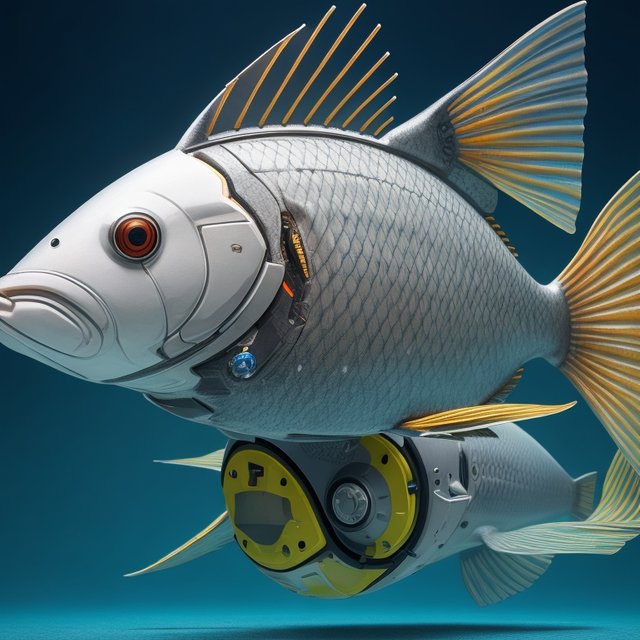scientific illustration of a robotic fish
Science and technology are two interconnected fields that have been driving innovation and progress for centuries. Science provides the foundation for technological advancements, while technology, in turn, provides the tools and methods for scientific research. This symbiotic relationship between science and technology is evident in many areas, and one particularly fascinating example is the development of robotic fish.
Professor Hu, a leading researcher in the field of robotics, has been at the forefront of developing robotic fish that mimic the swimming movements of real fish. This research has been driven by scientific curiosity about how fish move and navigate in water, as well as by the potential technological applications of robotic fish.
Science and Technology Behind the Robotic Fish
The development of robotic fish has required a deep understanding of fish locomotion and hydrodynamics. Professor Hu and his team have studied the kinematics and fluid dynamics of fish swimming, using high-speed cameras and sophisticated computer simulations to analyze the movements of different fish species.
This scientific research has provided valuable insights into the principles of fish propulsion and maneuverability. These insights have then been translated into the design of robotic fish that can replicate these movements and achieve efficient swimming in various aquatic environments.
The robotic fish developed by Professor Hu are powered by artificial muscles that mimic the muscles of real fish. These artificial muscles are made of piezoelectric materials that contract when exposed to an electric field. By carefully controlling the electrical signals to these muscles, the robotic fish can generate a variety of swimming motions, including forward propulsion, turning, and hovering.
In addition to the artificial muscles, the robotic fish are equipped with a variety of sensors that allow them to perceive their surroundings. These sensors include cameras, sonar, and accelerometers that provide information about the distance to objects, the flow of water around the robot, and the robot's orientation.
The sensory information is processed by a computer onboard the robot that controls the movements of the artificial muscles. The control algorithm is designed to mimic the neural control system of real fish, allowing the robot to react to changes in its environment and maintain stable swimming.
Applications of Robotic Fish
Robotic fish have the potential for a wide range of applications, including:
Environmental monitoring: Robotic fish can be used to monitor water quality, detect pollution, and study marine ecosystems.
Aquaculture: Robotic fish can be used to inspect fish farms, monitor the health of fish populations, and assist in fish harvesting.
Underwater exploration: Robotic fish can be used to explore shipwrecks, inspect underwater infrastructure, and conduct scientific research in deep sea environments.
Military applications: Robotic fish can be used for reconnaissance, surveillance, and mine detection.
Search and rescue: Robotic fish can be used to search for survivors in underwater accidents and disasters.
The Future of Robotic Fish
The field of robotic fish is still in its early stages of development, but the potential applications are vast. As the technology continues to improve, robotic fish are likely to become increasingly sophisticated and versatile, playing a major role in a variety of industries and applications.
The development of robotic fish is a testament to the power of science and technology to work together to solve real-world problems. By combining scientific understanding with technological innovation, researchers like Professor Hu are creating new tools that have the potential to benefit society in a variety of ways.
Conclusion
The connection between science and technology is a powerful force for innovation and progress. Robotic fish are one example of how this connection can be harnessed to create new and useful technologies. As the field of robotics continues to develop, we can expect to see even more amazing applications for robotic fish in the years to come.
